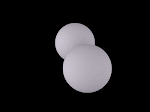Paharpur Buddhist Monastery
Paharpur Buddhist or somapura Somapura Vihara monastery or an ancient Buddhist monastery, now in ruins. Towards the end of the eighth century or the second Pala king, Shri dharmapaladeba were made in the ninth century convent. In 1879, Sir Cunningham discovered this huge feat. In 1985, the UNESCO World Heritage status, it does. Paharapurake can be called the world's largest monasteries. Can be compared with the size of India's Nalanda. For 300 years it was the center of Buddhist practices are very famous. Not just from across the subcontinent, China, Tibet, Myanmar (formerly Burma), Malaysia, Indonesia and the country's Buddhists come here to acquire spiritual knowledge and practices. By the tenth century, the capital of Bihar, Acharya were Atish Dipankar srijnanapundrabardhanera Pundranagara (current Mahasthan) and other city Kotivarsiya (current Bangarh) was located in the middle of the Somapura Mahavihara. The ruins of the current district of the village is located in the district of Naogaon district badalgachhi. On the other hand jamalaganja Joypurhat district's distance from the railway station is just 5 km to the west. The geographical position of 5 ° 0'north of 5 ° 15' and 88 ° 50' north latitude 89 ° 10' east longitude to the east. The village is about 0.10 square kilometers (10 hectares) is located in this antiquities throughout the region. This rectangle-shaped ground plan archaeological sign. It is located in the flood plains of the north, plaistosina Varendra period included in the low areas. Reddish soil due to the presence of iron in the ground substance. At present, however, most of the ground below the sediments are covered. 30.30 meters high is located in the hills surrounding plains around the structure like it is the last. The local people, "Gopal leopard rock" was called. Since then the name has been paharapura, although the actual name of the 7 th century convent in the middle of somapura Huen tsam came Pundravardhana somapurera Bihar and its details, and there is no mention of the temple. Dharmapala, son of Gopala (781 - 822 AD) ascended the throne and ruled for a long time than the states of Bihar Bengali Pakistan - Gandhara extended the western border. Emperor Dharmapala was a devout Buddhist, and he founded the Bihar Vikramashila and somapura. According to another, the famous Tibetan history, "Zhang paga Psalm zone," the author of the highly visibly Devapala son Dharmapala (810-850) built a convent and a lofty temple mentioned by Somapure. Somapura monastery monks at Nalanda, Bodh Gaya Buddhist pilgrimage site, and a variety of Indian treasures and gave money to 10 different script, which has been mentioned - is an indication of the prosperous 11th century. Until the 9th century under the patronage of the Palas of Bihar in addition to somapura agrapura (Rajshahi agradiguna), usmapura, gotapura, etapura and lumbering (Rajshahi Jagdal) is mentioned in Bihar. Gujarat is the first meal of the late 9th century king Mahendra Pal, Pal Empire was particularly affected. After the end of the 10th century, the king of the Pala dynasty Mohipala (995 - 1043) dynasty was restored and repaired somapura Bihar. But nayapalera Mohipala and his son after the death of the Pala dynasty began to decline again. Taking advantage of the central cediraja ear, and dibbo colaraja Rajendra, a local feudal lord Kaibarta Barind after the attack. Probably referring to the destruction of temples and monasteries of Nalanda Paharpur attacks. 11th century Pala dynasty was restored hrtarajya Rampal. Deccan from the Senas century Carnatic 1 Bengali captured. Somapura to lose their royal patronage. Somapurera at last began to decline. At the beginning of the 13th century ikhatiyarauddina Muhammad - bin - Bakhtiyar Khilji invaded Bengal took nearly uttarabangai. Perhaps this is due to the attitude of the Muslim rulers murtibirodhi fully destroyed Buddhist monasteries and temples in this land-planning catuskonakara yayabauddha monastery. North and south, east and west of strength and strength of each 2737 m 27415 m. There was broad sides of the border walls. The interior of the small room was lined up along the walls. The north arm of the arm 45 and the other 44 rooms on three sides. The rooms on three floors have been discovered. Each floor is spread out over the thick brick suraki were made with highly durable way. The last period of 9 rooms on the floor were built in various sizes. This can be inferred from that, all in the first period, but subsequently used as abasakaksa kaksai monks to convert some rooms prarthanakakse hayechilokaksagulora each door. The inner side of the doors is wide but thin on the outside. There is no cell niche. Several rooms on the floor with niche products can be found in everyday use. 426 m in length and 4.11 m width of the inner rooms. The back side of the boundary walls of the cell wall of 4.87 m and 244 m wide in front of the wall. .5 M wide drawn in front of the rooms have balconies. The inner side of each arm to the open space in the middle of the stairs along the side of the main gate yuktabiharera. The outer and inner side of the column with a small hole next to the hall and there. This cubbyholes were used for various purposes.







0 comments:
Post a Comment